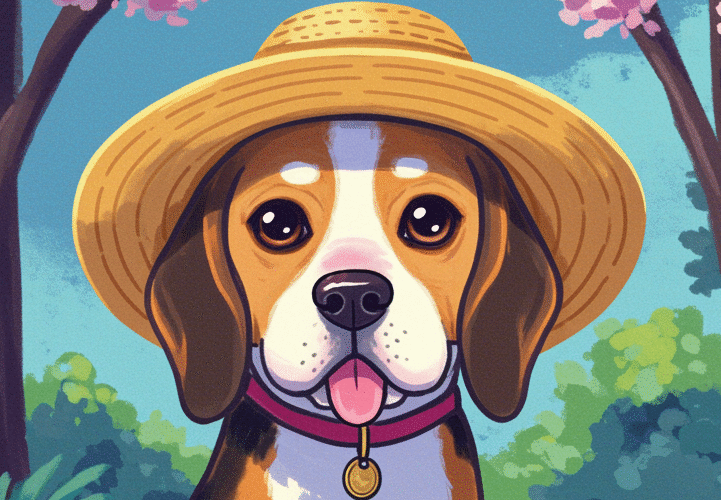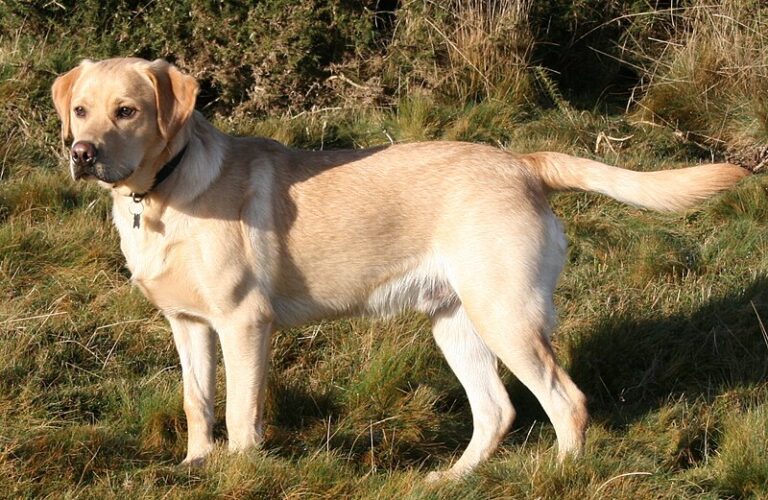Growing old is a natural part of life, and just like us, our beloved four-legged companions also embark on this journey. As our dogs age, they may encounter a range of new challenges and require special care to ensure their well-being. However, navigating the complexities of caring for older dogs can be overwhelming without proper guidance.
In this comprehensive guide, we will explore the various aspects of caring for senior dogs with expertise and precision. From recognizing the signs of aging to providing optimal nutrition and exercise, we are here to equip you with invaluable knowledge that will enable you to give your furry friend the love and attention they deserve during their golden years.
Growing Old and Graceful: The Journey of Our Beloved Four-Legged Companions
As the years pass, our canines embark on a journey that mirrors our own. They age, just as we do, navigating the challenges that come with growing older. However, their unwavering loyalty and endearing companionship throughout this journey make it all the more special. Understanding the process of aging in dogs allows us to provide them with the love and care they deserve in their golden years.
One of the first signs of aging in dogs is a gradual decrease in energy levels. As your furry friend enters their senior years, you may notice them becoming less active or needing more frequent rest breaks during walks. This change doesn’t mean they’ve lost their zest for life; instead, it indicates that they require a different pace and gentle activities tailored to their needs.
Another aspect linked to aging is cognitive decline. Just like humans, dogs may experience memory loss or become disoriented as they grow older. While this can be disheartening to witness, there are steps we can take to support their mental well-being. Engaging your senior dog with mental stimulation exercises such as puzzle toys or interactive games helps keep their minds sharp and prevents cognitive deterioration.
The physical appearance of our loyal companions also undergoes transformations as they age. Gray hairs start to pepper their once vibrant coat, while muscle tone may diminish gradually due to natural wear and tear on joints and tissues. These changes are an inevitable part of the aging process but should not overshadow the beauty that lies within – a lifetime’s worth of love etched into every wrinkle on their wise faces.
Recognizing the Signs of Aging in Your Furry Friend
As our loyal companions age, they may exhibit certain signs that indicate the passage of time. It is crucial for dog owners to be able to recognize these signs so that they can provide appropriate care and support. One of the first noticeable changes in older dogs is a gradual decrease in energy levels and activity. They may not be as playful or enthusiastic as they once were, preferring more restful activities instead.
Another common sign of aging in dogs is changes in their coat and skin. You may notice their fur becoming thinner, duller, or developing gray patches. Their skin might also become more sensitive or prone to dryness. Regular grooming and a proper diet can help maintain the health and appearance of their coat, giving them a renewed sense of vitality.
It’s important to keep an eye on your dog’s eyes as well. As they age, dogs are prone to develop various eye conditions such as cataracts or glaucoma. Look out for any cloudiness, redness, or discharge from their eyes. Regular vet check-ups will enable early detection and effective treatment options for these issues.
Furthermore, changes in your dog’s behavior should not be overlooked when assessing signs of aging. They might become less interested in social interaction or exhibit confusion at times. This could indicate cognitive decline or age-related cognitive dysfunction syndrome (CDS). Engaging them with mentally stimulating activities can slow down this decline and improve their overall well-being.
Nourishing the Golden Years: Senior Dog Nutrition Made Simple
As our loyal furry companions enter their golden years, it becomes crucial to provide them with the best nutrition to support their changing needs. Just like humans, older dogs often experience a decrease in metabolism and may be prone to certain health conditions. By tailoring their diet accordingly, we can ensure that they enjoy a healthy and vibrant life in their senior years.
1. Understanding Nutritional Requirements: When it comes to senior dog nutrition, a well-balanced diet is key. As dogs age, they typically require fewer calories due to decreased activity levels and slower metabolisms. However, it’s important not to compromise on essential nutrients. Look for high-quality senior dog food formulated specifically for older dogs, which typically contains lower fat content and added joint-supporting ingredients such as glucosamine and chondroitin.
2. Quality Protein for Muscle Maintenance: Protein remains essential in a senior dog’s diet as it aids in maintaining lean muscle mass while providing energy. Opt for lean protein sources such as chicken or fish that are easily digestible yet rich in amino acids. Incorporating quality protein into your older pup’s meals can help support their overall muscular strength and vitality.
3. Essential Fatty Acids for Healthy Joints: Omega-3 fatty acids play a crucial role in promoting joint health and reducing inflammation, which is particularly beneficial for senior dogs prone to arthritis or mobility issues. Consider incorporating foods rich in omega-3s like salmon or flaxseed oil into your pet’s diet, or consult with your veterinarian about suitable supplements.
4. Hydration Matters: Adequate hydration is vital at any age, but especially for aging dogs who may be prone to dehydration due to various factors such as decreased thirst perception or certain medications. Ensure clean, fresh water is readily available to your furry friend at all times. You can also add moisture to their diet by feeding them wet food or incorporating bone broth into their meals.
Remember, the key to providing optimal nutrition for your senior dog lies in understanding their changing needs and adapting their diet accordingly. By nourishing them with a well-balanced diet rich in essential nutrients, you can support their overall health, enhance their vitality, and ensure they enjoy their golden years to the fullest.
Keeping the Old Bones Moving: Exercise Ideas for Older Dogs
As our canine companions enter their golden years, it is crucial to provide them with appropriate exercise to keep their bodies strong and agile. Regular physical activity not only helps maintain muscle mass and joint flexibility but also promotes mental stimulation and emotional well-being in older dogs.
1. Low-Impact Activities: While energetic games of fetch or intense agility training may be a thing of the past, there are plenty of low-impact exercises that are gentle on aging joints. Consider taking your furry friend for leisurely walks in the park or swimming sessions in a calm body of water. These activities provide cardiovascular benefits without placing excessive strain on weary bones.
Remember, every step your senior dog takes is an opportunity to explore the world around them, engage their senses, and create lasting memories.
2. Puzzle Toys and Mental Stimulation: Physical exercise alone may not be enough to satisfy an older dog’s needs; mental stimulation is equally important. Invest in puzzle toys that challenge your furry friend’s cognitive abilities while rewarding them with treats or interactive play. Such toys keep their minds sharp and prevent boredom while providing a much-needed outlet for mental energy.
Your wise old companion will relish the opportunity to solve puzzles, revealing treats hidden within as they exercise their problem-solving skills—proving that age truly is just a number when it comes to intellect.
3. Gentle Stretching Routines: Much like humans, older dogs benefit greatly from regular stretching exercises. These slow, deliberate movements help maintain flexibility and prevent muscle stiffness. Incorporate gentle stretches into your dog’s daily routine by guiding them through simple movements such as neck rotations, front leg stretches, and hind leg extensions. Be sure to reward their cooperation with a tasty treat or words of encouragement.
Through these stretching sessions, you provide your loyal companion with not only physical relief but also the reassurance that their well-being is a top priority—solidifying the bond between human and canine.
4. Playful Interaction: Although they may have slowed down, older dogs still crave social interaction and playtime with their beloved human. Engage in gentle games such as hide-and-seek or tug-of-war, using soft toys to avoid unnecessary strain on aging teeth or joints. These moments of connection and joy create lasting memories while keeping your senior dog’s body active and mind engaged.
Each playful interaction is an opportunity for your mature companion to experience sheer happiness, reinforcing the understanding that love knows no age limits.
In conclusion, exercise remains an essential component in caring for older dogs. By incorporating low-impact activities, puzzle toys for mental stimulation, gentle stretching routines, and playful interaction into their daily routine, we can ensure that our aging companions stay healthy, happy, and fulfilled throughout their golden years.
Arthritis in Aging Dogs: Effective Treatment and Pain Relief Options
As our furry friends age, they may experience the frustrating and debilitating effects of arthritis. This condition can cause discomfort, stiffness, and reduced mobility in our beloved companions. However, with the right treatment and pain relief options, we can ensure that their golden years are filled with comfort and happiness.
When it comes to managing arthritis in older dogs, there are various effective treatment approaches available. One such option is medication. Non-steroidal anti-inflammatory drugs (NSAIDs) can provide significant pain relief by reducing inflammation. It’s important to consult with your veterinarian to determine the appropriate medication and dosage for your furry friend as different breeds may have different requirements.
Another valuable method for minimizing arthritis symptoms is physical therapy. Just like humans, dogs can benefit from exercises that improve joint flexibility and muscle strength. Hydrotherapy is particularly beneficial for aging dogs as it provides low-impact exercise while reducing stress on their joints. Additionally, gentle massages and range-of-motion exercises can help alleviate stiffness and improve overall well-being.
In recent years, alternative treatments like acupuncture and chiropractic care have gained popularity in veterinary medicine for managing arthritis pain in dogs. These holistic approaches focus on restoring balance within your dog’s body by targeting specific pressure points or manipulating their spine to relieve discomfort. While some may be skeptical about these methods initially, countless success stories highlight how such treatments have significantly improved the quality of life for many senior pooches.
Conclusion
In conclusion, caring for our older canine companions is a responsibility that requires patience, compassion, and a deep understanding of their changing needs. By recognizing the signs of aging, providing a nutritious diet tailored to their specific requirements, engaging them in appropriate exercise routines, and seeking proper treatment for age-related conditions like arthritis, we can ensure that our beloved furry friends enjoy their golden years to the fullest. Remember, with love and diligent care, we have the power to make this chapter of their lives truly remarkable and filled with happiness. So let’s embrace this journey together and cherish every precious moment with our wise and loyal companions.





